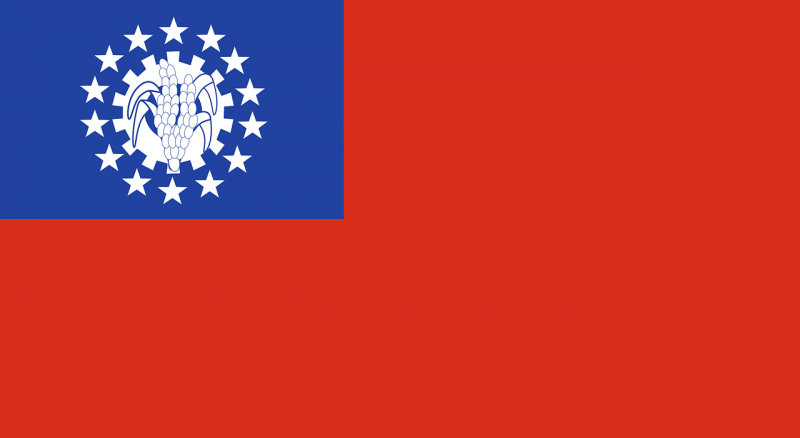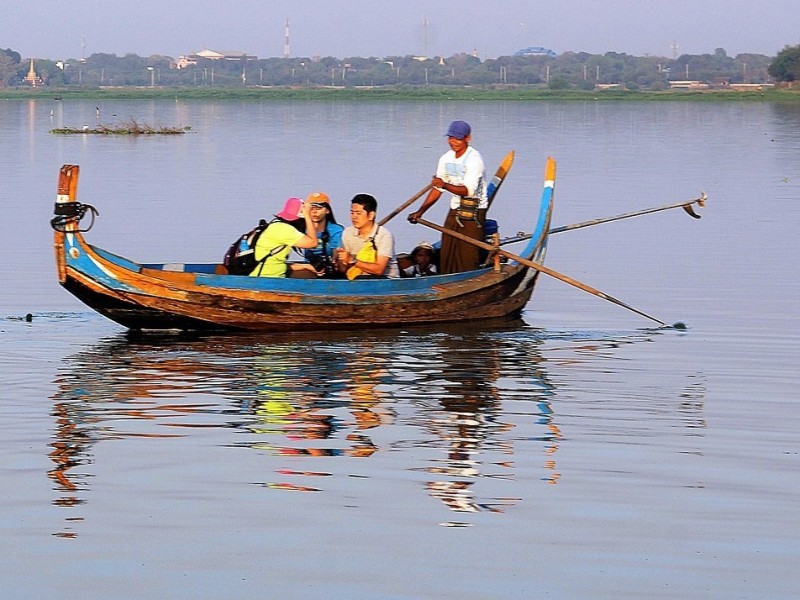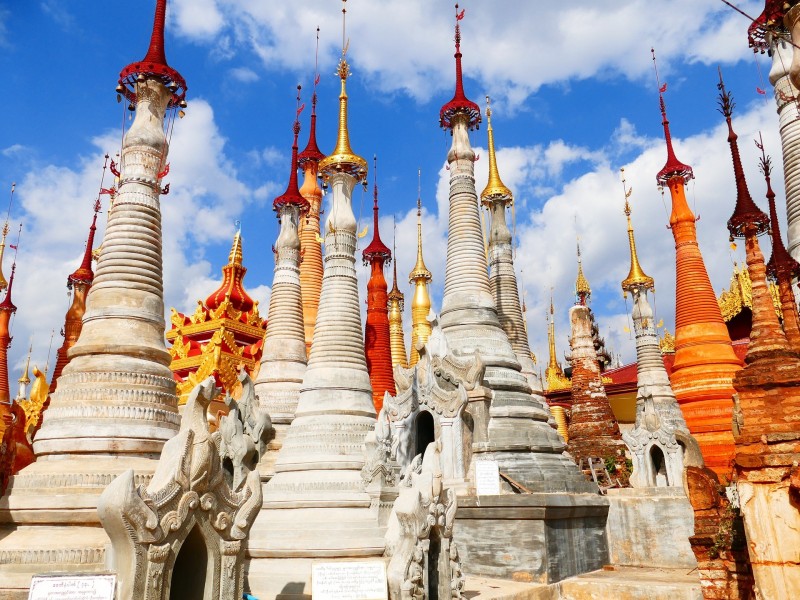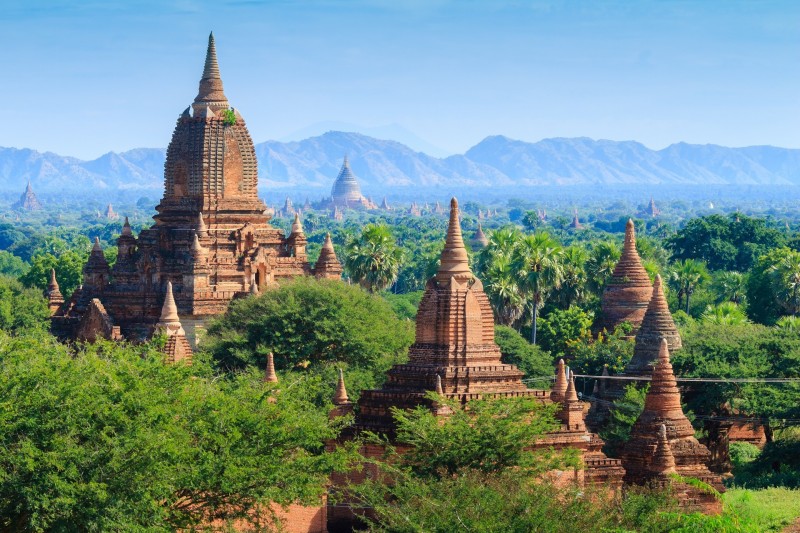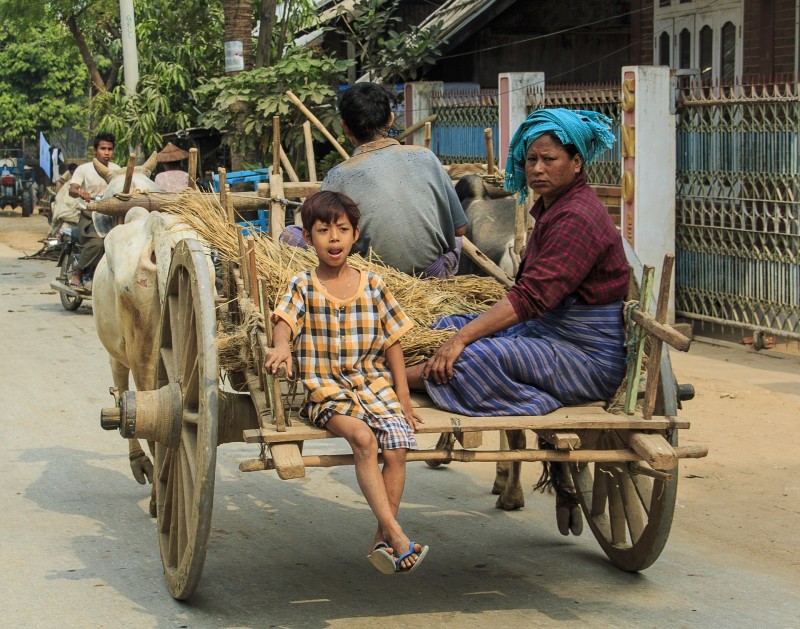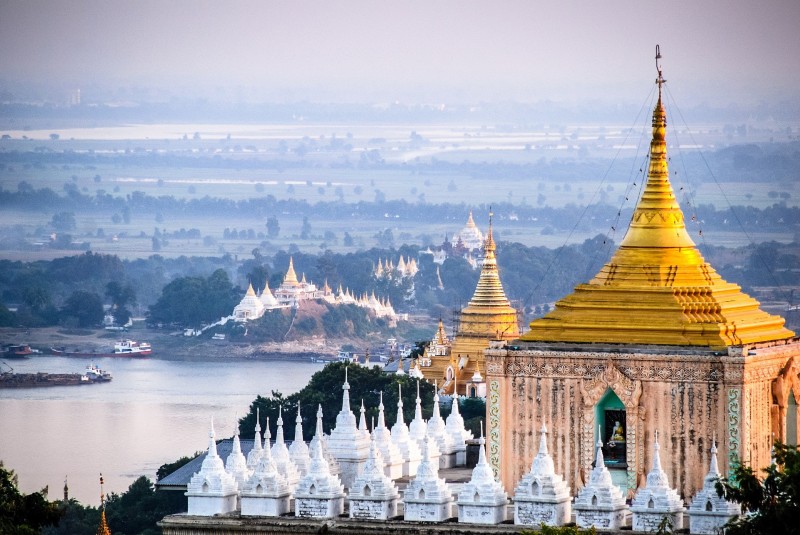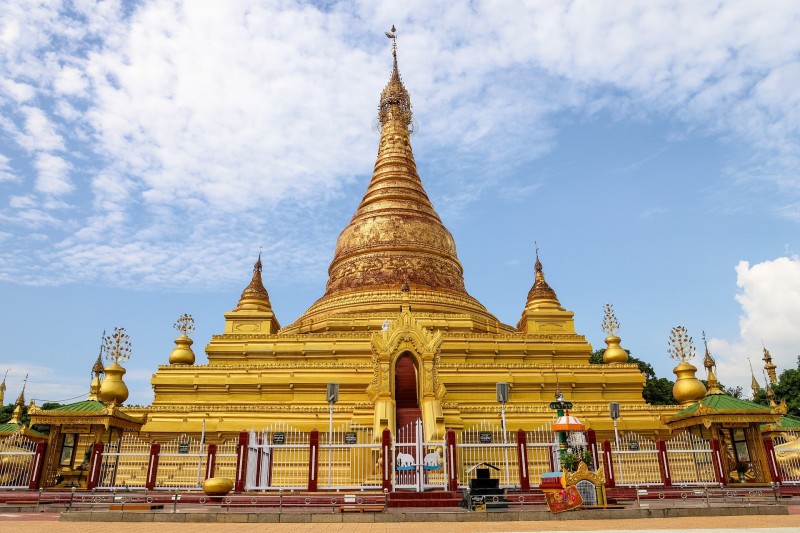Myanmar
Myanmar
Capital city description
Naypyidaw is the capital city of Myanmar. The capital city is located between the two mountain ranges of the Bago Yoma and the Shan Yoma. The Chaungmagyi Dam and the Ngalaik Dam are located a few kilometers to the north and south of the city, respectively. It was founded in 2002 on a greenfield site located close to Pyinmana at about 320 km from Yangon, the former capital city of Myanmar. Naypyidaw occupies an area of 7,054.37 square km and hosts a population of 924,608.
Climate
Myanmar has a tropical monsoon climate. It is characterized by strong monsoon influences and has a high rate of rainfall. It also experiences a considerable amount of sun. The annual average temperature ranges from 22 degrees Celsius (72° Fahrenheit) to 27 degrees Celsius (81° Fahrenheit) year-round. However, the high humidity sometimes makes it feel quite uncomfortable.
- The cold and dry season: November to February
- The hot-dry season: March to April
- The wet season: May and October
Languages spoken
The official and widely spoken language of Myanmar is Burmese. Burmese is the mother tongue of millions of Bamar people – the biggest ethnic group in Myanmar. It is also spoken by the Mon ethnic minority group and some other minority ethnic groups in Myanmar.
Fun/Fascinating Facts
- In Myanmar, People, especially women, tend to carry things on their heads rather than using their hands. But, taking things on the head is quite popular and is a more convenient method of transport. You can expect to see vendors carrying food on a large metal plate or even a basket full of the weekly shopping on their heads.
- Burmese women are used to putting thanaka on their checks – a cosmetic paste made from the bark of selected trees. The wearing of thanaka has been happening for at least 2,000 years; it keeps skin smooth and protects against sun damage.
- The vehicles currently on the roads are mixed with highly vintage left-hand-drive vehicles and newer right-hand-drive vehicles imported from Japan. Roads and older vehicles were designed to drive on the left. Now that cars drive on the right, it can cause a few problems and difficulties for pedestrians. Some bus stops are also on the left-hand side of the road. Imagine running across a lane of traffic to get to the bus stop.
- The Kayan people are an ethnic minority group in Myanmar whose women wear brass neck coils. Girls first start wearing the rings when they are around five years old. Gradually, the number of coils is increased so that the weight of the brass pushes their collar bone down to compress the rib cage. According to some beliefs, the coils were meant to protect women from slavery or wild animals, while others believe it made them more attractive to men in their tribe.
- Myanmar is one of only three countries in the world not to use the metric system. The country still uses its units of measurement, though you’ll find gas measured in gallons and distances in miles. Weight is a bit trickier, with one viss (peittha) equal to 1.68 kilograms (3.5 pounds).
Unique Customs/Traditions
- Wander down any street in Myanmar, and you'll see that most of the women and children you pass will have pale yellow paste smeared over their faces. Ranging from streaks and the cheekbones to full-face packs extending from chin to forehead, the masks are made of 'thanaka' powder, derived from the bark of a medicinal tree that grows in the hill country. Burmese people believe that putting 'thanaka' could improve the complexion, protect the skin from the sun's effects, and prevent wrinkles.
- Longyi is a piece of cloth that is sewn into a cylindrical shape and tucked at the waist. It is one of the most iconic and traditional forms of dress in Myanmar. It is worn by both men and women, with slight variations of the garment for each gender. Most of the men will call their apparel a "pasu" while women call theirs "htamein"
- Typically, you will find men's longyis a bit planer while women's longyis are brighter and patterned. This style is popular since it allows one to remain conservative while remaining cool in the warmer climate.
- Myanmar's national game is a form of 'keepy-uppy,' in which participants pass a woven cane ball to each other without touching it with their hands or allowing it to hit the ground.
- Myanmar cuisine is heavily influenced by Indian, Chinese, Thai, and ethnic minorities. The main dish in Burmese cuisine is steamed rice. It will be served with curry, stir-fried dishes, soup, fresh or boiled vegetables to go with a salty dish, almost invariably a curried sauce of pickled fish.
- Traditionally, in Myanmar, age is very much respected, and this is also reflected in the national attitude. A suitable title precedes names. It isn't polite to call a person by their name unless they are close friends or younger people.
- In Myanmar, visitors can easily see people eating betel as an indispensable snack anytime and anywhere. You will see many stalls selling betelnut on the streets.
- Betelnut consists of diced areca nuts and a betel leaf applied with a thin layer of lime, sprinkled with tobacco, and rolled up. Betelnut has a similar effect as caffeine and stains teeth red. Chewers store betelnut between their gum and cheek, like chewing tobacco, and then spit as they chew. Burmese men chew betel nut more than women.
Popular universities
| Name | Description | |
|---|---|---|
| University of Yangon | The University of Yangon was founded in 1878; it is located in Kamayut and is recognized as one of the oldest universities in Myanmar to date. It offers various degrees in different programs, such as liberal arts, sciences, and law. The University of Yangon is one of the best universities in Myanmar and holds professional colleges and institutes that can give independent education to its students. | |
| University of Mandalay | Established in 1925, the University of Mandalay is home to a faculty and staff that can teach students in public liberal arts and science, located in Mandalay. The University of Mandalay offers courses and programs leading to officially recognized higher education degrees in several areas of study. It has around a thousand enrolled students and a campus that provides a conducive environment for learning. | |
| Dagon University Myanmar | Dagon University Myanmar was established in 1993, is a non-profit public higher education institution located in the small city of North Dagon. Dagon University offers courses and programs leading to officially recognized higher education degrees in several areas of study. The Dagon University Myanmar is a good choice for international students who value a vast campus while they study. | |
| University of Medicine 1, Yangon | University of Medicine 1, Yangon is a non-profit public higher education institution located in the large metropolis of Yangon. Established in 1927 and Officially recognized by the Ministry of Health and Sports of Myanmar. University of Medicine 1, Yangon (UM1) offers courses and programs leading to officially recognized higher education degrees in several areas of study. University of Medicine 1, Yangon also provides academic and non-academic facilities and services to students, including a library and administrative services. | |
| The Yangon University of Economics | The Yangon University of Economics is a non-profit public higher education institution located in the small city of Kamayut, Yangon. Founded in 1964 and officially recognized by the Ministry of Education (Science and Technology) of Myanmar. Yangon University of Economics (YUECO) offers courses and programs leading to officially recognized higher education degrees such as bachelor's degrees, master's degrees in areas of study. | |
| West Yangon Technological University | West Yangon Technological University is a non-profit public higher education institution located in the urban setting of the medium city of Hlaingthaya, Yangon. Established in 2005 and officially recognized by the Ministry of Education (Science and Technology) of Myanmar. West Yangon Technological University (WYTU) offers courses and programs leading to officially recognized higher education degrees in several areas of study. | |
| University of Foreign Languages, Yangon | University of Foreign Languages, Yangon (UFLY Yangon) offers courses and programs leading to officially recognized higher education degrees such as bachelor's degrees, master's degrees in several areas of study. Founded in 1964, the University of Foreign Languages, Yangon is a non-profit public higher education institution located in the small city of Kamayut, Yangon. Officially recognized by the Ministry of Education (Science and Technology) of Myanmar, the University of Foreign Languages, Yangon (UFLY Yangon) is a coeducational Burmese higher education institution. | |
| University of Nursing, Yangon | University of Nursing, Yangon is a non-profit public higher education institution located in Lanmadaw, Yangon. Established in 1986 and officially recognized by the Ministry of Health and Sports of Myanmar. University of Nursing, Yangon, offers courses and programs leading to officially recognized higher education degrees in several areas of study. | |
| University of Dental Medicine | University of Dental Medicine, Yangon is a non-profit public higher education institution located in Thingangyun, Yangon. Established in 1964 and officially recognized by the Ministry of Health and Sports of Myanmar. University of Dental Medicine, Yangon, offers courses and programs leading to officially recognized higher education degrees in several areas of study. | |
| Yangon University of Education | The Yangon University of Education is a non-profit public higher education institution located in the large metropolis of Yangon. Founded in 1931 and officially recognized by the Ministry of Education (Science and Technology) of Myanmar. Yangon University of Education (YUOE) offers courses and programs leading to officially recognized higher education degrees such as bachelor's degrees, master's degrees, doctorate degrees in several areas of study. | |
Festivals & Events
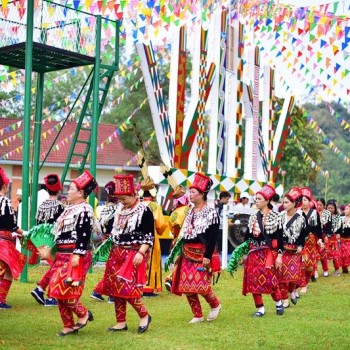
Kachin Manaw Festival
Date: January
Kachin Manaw Festival in Myanmar, perceived as the New Year for Kachin, is a joint festivity of battle victories, the tribes’ reunion, and the tradition. The celebration is held in Myitkyina, the capital of Kachin State. Colorfully decorated Manaw poles are erected at the center while Kachin people dance and sing around them in their fancy customs. This festival is one of the most pleasing and famous festivals of Myanmar.
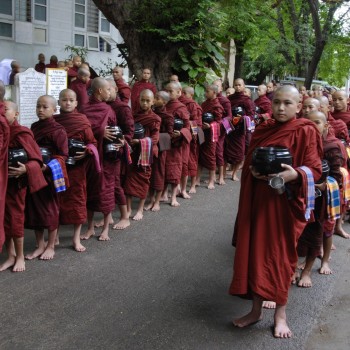
Ananda Pagoda Festival
Date: January ( from the full-moon day to the end of Pyatho month)
The Ananda Pagoda Festival is one of the most well-known festivals held for social gathering, reunification, propagation, and perpetuation of Buddhism. Throughout the 15 days of celebration, villagers around Bagan set up camp for market fairs and traditional performances presented by the local theatrical troupes. The most inspiring aspect must be over 1,000 monks performing continuous chanting of scriptures for 72 hours while donors place donations in their hands.
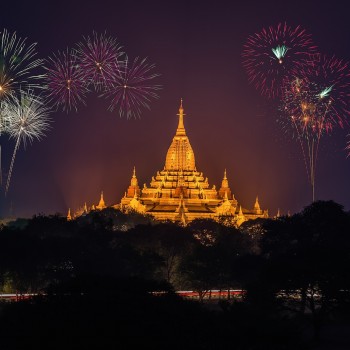
Naga New Year
Date: January
Naga New Year of Naga tribes in the western part of Myanmar, celebrated by over 49 hill tribes, lasts for two days. It is held in townships of Leshi, Lahe, and Nanyun rotationally. It is one of the most prestigious festivals in Myanmar. The opening ceremony of this festival will be held on 13th January. Competitions and traditional sports are organized, and colorful costumes, grilled meat and rice, wine, and ancient tribal dances are the main highlights of this festival.

Thingyan Water Festival
Date: April
This water festival in Myanmar is the most important and the most exquisite event across Asia. Also known as Thingyan in Burmese, this festival symbolizes the end of the dry and rainy seasons, thus the water-throwing. Splashing water on each other is believed to eliminate evil, bad luck, and guilt; good health and fortune are on the way.
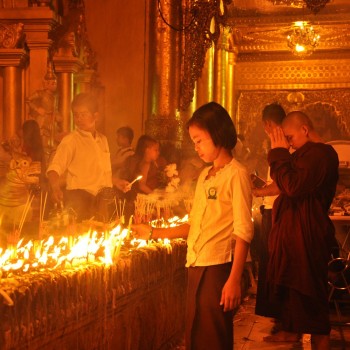
Shittaung Pagoda Festival
Date: April
The Rakhine people celebrate the Shittaung Pagoda festival, one of the fantastic festivals in Myanmar. People go to the pagoda to light candles and offer flowers in honor of their faith. Traditional dances, boat rowing competitions, and boxing competitions are held in the village during this traditional festival.
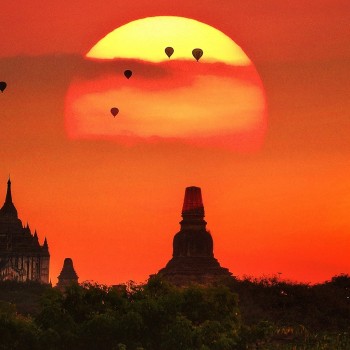
Taunggyi Hot Air Balloon Festival
Date: 16th to 22nd November
Traditionally, the hot air balloon festival celebrates to pay homage to the Sulamuni Pagoda in the abode of the Celestial Beings by sending up lighted Hotair Balloons. Presently, this festival is combined with a competition to send up the most intricate and beautiful balloons of every shape and size. Hot-air balloons are released day and night, competing over their beauty and altitude. Additionally, there is the kids’ show during the daytime, with giant balloons created in the shapes of animals - including anything from birds to tigers or elephants.
.jpg)
Golden Hilltop festival
Date: February
One of the most famous festivals in Myanmar is the Golden Hilltop festival. Held at the Kyaik Khauk Pagoda, Golden Hilltop Festival is a fair kind of setup where you can buy local produce, pottery items, ceramics, furniture, bamboo mats, and delectable local dishes. In the evening, stage shows are organized, and the locals from the surrounding villages attend this festival. In addition, the traditional Burmese performances known as “Anyeint” are held alongside other stage shows and movie screenings.
Attractions / Top Sights
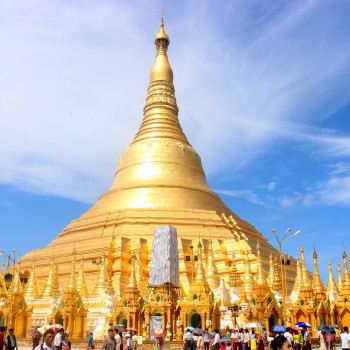
Shwedagon Pagoda
When to visit: November to February
The Shwedagon or Greater Dragon Pagoda is considered the most sacred pagoda in Myanmar, located in the center of Yangon, the old capital of Myanmar. The origins of Shwedagon are lost in ancientness. Still, it is estimated that the pagoda was first built by the Mon during the Bagan period, sometime between the 6th and 10th centuries AD.
The Shwedagon Pagoda, a symbol of Myanmar, is 112 meters high and made of brick with gold on the surface. The Shwedagon Pagoda has four entrances. It would be best to follow a dress code (trousers preferred, T-shirts with elbow-length sleeves) and enter the temple barefooted.
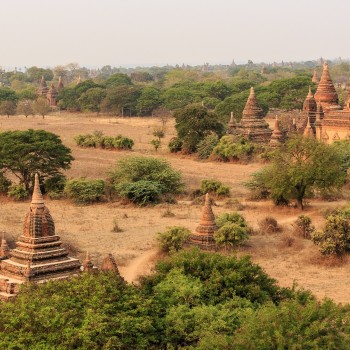
Bagan
When to visit: September to April
The most popular destination in Myanmar, Bagan, was the capital of the First Burmese Empire from the 9th to the 13th centuries, situated on the left bank of the Irrawaddy River and about 90 miles (145 km) southwest Mandalay. Marco Polo once described the “gilded city” site as home to around Buddhist 13,000 temples in its 11th-century heyday.
Thousands of temples, stupas, and pagodas remain, including the famous Ananda temple with its shimmering gold spires.
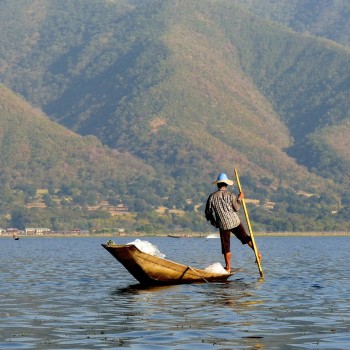
Inle Lake
When to visit: November to February
Enormous and peaceful Inle Lake is one of the top tourist attractions in Myanmar. This vast picturesque lake, 900 meters above sea level, natural and clean lake is surrounded by floating islands. It is famous for its scenic beauty, unique leg rowers, and colorful local markets.
The islands on Lake and Lake are 17 villages on stilts, occupied mainly by the Intha people. An ordinary day trip on the lake, taken in a long, narrowboat with a noisy outboard motor, will stick to the northern reaches of Inle Lake. These trips also include visits to small workshops in stilt villages, several pagodas.
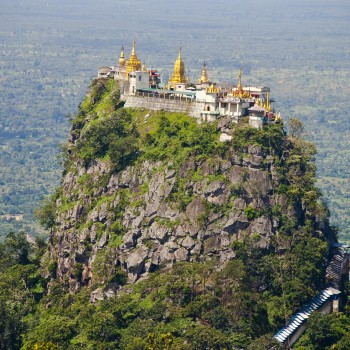
Mount Popa and Taung Kalat
When to visit: November to May
Mount Popa is a steep volcanic peak dedicated to famous spirits “Nat” in Myanmar. The nearby Mount Popa itself joined the lush, verdant forest full of distinct flora and fauna abundance. It can be described as an oasis in the center of dry Myanmar.
Built atop an extinct volcano plug, the Buddhist monastery of Taung Kalat is one of the most breathtaking sites in Burma. To reach the monastery, visitors must climb the 777 steps to the peak.
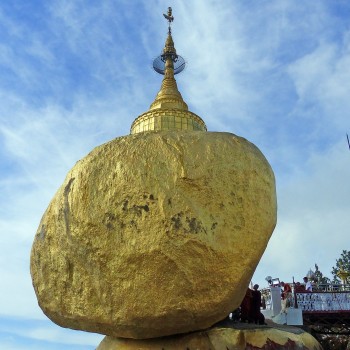
Golden Rock
When to visit: November to March
Golden Rock, also known as Kyaiktiyo Zedi, is an incredible sight: a pagoda (zedi) resting atop a huge boulder that appears as if it's about to fall off the edge of a cliff. It is the most important religious pilgrimage site in Myanmar after the Shwedagon Pagoda. The locals believe the boulder, which sits 1,100 meters (3,600 feet) above sea level, is held in place through a miracle of Buddha.
Golden Rock is about a five-hour drive from Yangon and also expects a long walk. A staircase leads to the pagoda complex that houses several viewing platforms and Buddha shrines.
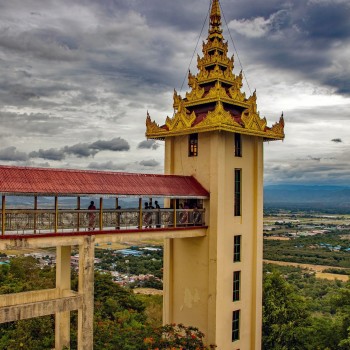
Mandalay Hill
When to visit: November to February
Mandalay Hill, found in the north of Mandalay, is a renowned Buddhist shrine in Myanmar. It is also the highest mountain in Mandalay, with an altitude of 231.6 meters. It is a glorious place to watch the sunrise and sunset. You can overlook the city of Mandalay on the top of the hill.
The main entrance to Mandalay Hill is located on the south side. There are numerous temples and pagodas at the foot of the mountain that is worth visiting.
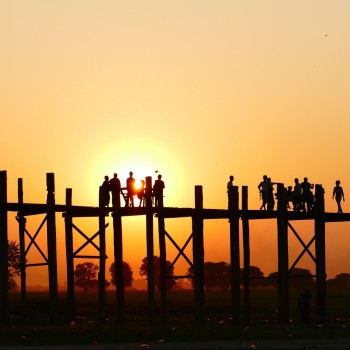
U-Bein Bridge
When to visit: November to March (around sunset )
The U-Bein Bridge is about 1.2 kilometers long and is the longest teak wooden bridge in the world. Its piers, bridges, and paved planks are all made of valuable teak and memorialized for centuries. The sunset over U-Bein Bridge is very romantic and is one of the most famous sights in Myanmar. There are six pavilions on the bridge, which symbolize the "six spirits" of Buddhism."
U-Bein Bridge is a romantic tourist attraction in Myanmar, and according to history, when Burmese are in love, they will come to the bridge to pray for love to last longer. Hence, the locals also declared U-Bein Bridge "Lover Bridge."
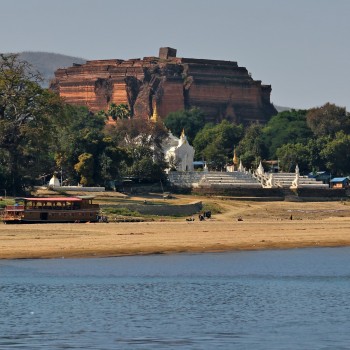
Irrawaddy River
When to visit: November to March
The Irrawaddy River is an essential passage for exploring Mandalay. It is one of the most well-known rivers in Asia and the largest and most important river in Myanmar. Its name is a form of the Sanskrit word Iravati which refers to the river Ravi in northwestern India and eastern Pakistan and Airavati, the elephant mount of the Hindu god Indra. Elephants often symbolize water in Indian mythology. Myanmar Government now has transliterated the name as Ayeyarwady, but local people prefer to spell Irrawaddy.
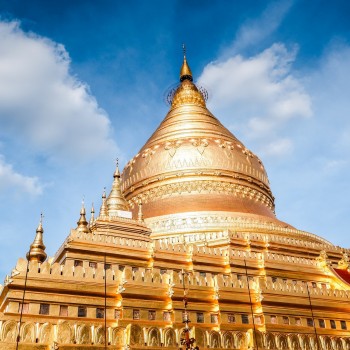
Shwemawdaw Paya
When to visit: November to March
Shwemawdaw Paya acquired its name, the Great Golden God, because the glittering gold covering it can be seen for miles. At almost 114 meters (375 feet) high, it is the tallest pagoda in Myanmar. The diamond-studded top is bound for some of the glitters.
It is essential to Buddhism because it comprises several relics belonging to Buddha. Located in Bago, the 1,000-year-old complex is highly ornamented with smaller pagodas that are gold-covered, statues, and pavilions.
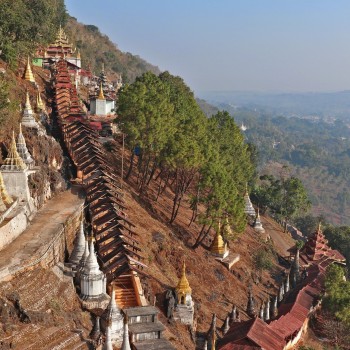
Pindaya Cave
When to visit: November to February
Pindaya Cave holds more than 8,000 statues of Buddha from various periods. These Buddha statues cover almost the cave's walls, and many visitors will be amazed at the number of these Buddha statues. The elegant entrance is placed on the side of a large hill.
Pindaya Cave is comparable to a Buddhist theme park in appearance. A sculpture of a 20-foot (6-m) wide spider and giant archer sculpture at the entrance depicts a local legend. Glass elevators carry visitors up to six stories to the cave entrance.















